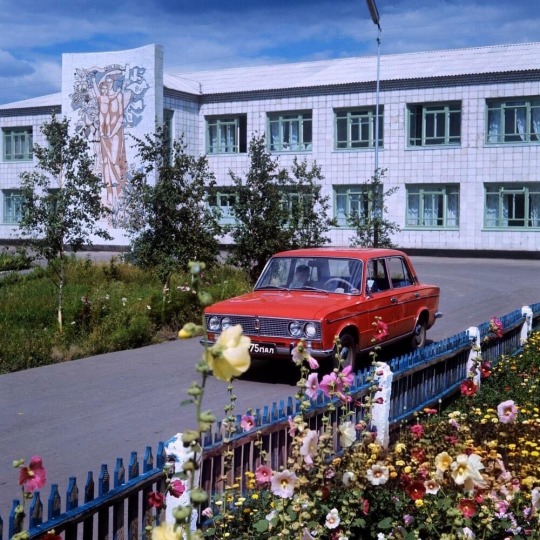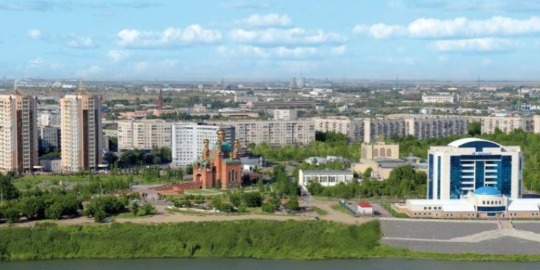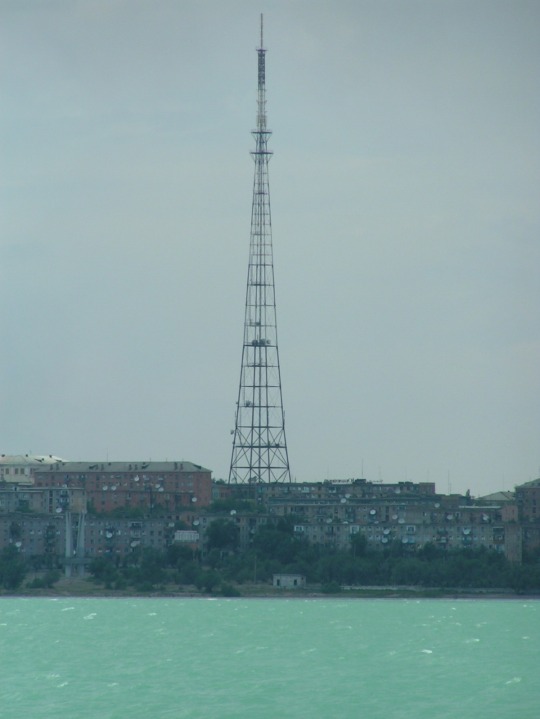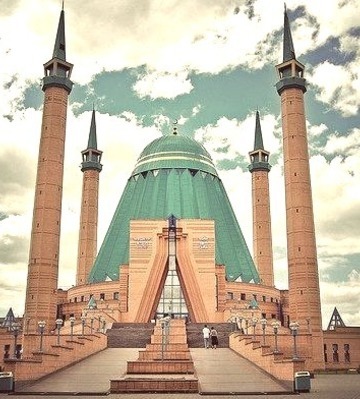#pavlodar
Explore tagged Tumblr posts
Text


Perhaps, my constant place to enjoy and study🤭
1 note
·
View note
Text

A Red Army flag from the early 1920s at the Pavlodar regional museum in Kazakhstan.
Written on the flag: "Imperialistic army -- an instrument of oppression, the Red Army -- an instrument of liberation."
Via LadyIzdihar
416 notes
·
View notes
Text



Address: Pavlodar, Kazakhstan
#interiors#interior design#architecture#house#home#decor#interior#living room#home interior#furniture#design
2 notes
·
View notes
Text
The Siberian Unicorn

Reconstruction of an Elasmotherium, an extinct species of rhino that lived in the Eurasian area in the Late Pliocene and Pleistocene eras (around 39,000 years ago).
This animal could have been the basis for the unicorn myth that has persisted for thousands of years.
The Giant Siberian Unicorn, also known by its scientific name, Elasmotherium (E. sibiricum), is an extinct species of giant rhinoceros that had an extremely large horn on its forehead and a body covered in shaggy fur.
It was first named by Johann Gotthelf Fischer von Waldheim (13 October 1771 – 18 October 1853) in 1808. He was the director of the Natural History Museum in Moscow.
The Giant Siberian Unicorn was about the size of a mammoth. However, early reports say this beast weighed up to 4 tonnes, stood at 6.5 feet tall, and was about 14.76 feet long.
It has been debated on if this animal would gallop like a horse or would walk hunched over with his head to the ground like a bison.
The beast's front feet were larger than the rear and it had just three digits.
It is also debated on whether it had a giant horn on its head or not. Most experts believe it did as there is reasonable evidence of it having a horn based on the skulls they have found.
The skulls had a protuberance that suggested it was the base of a large horn.
The use of this horn could have been to dig for food, attract mates, and for self-defense.
It is believed that their horns and hooves were made of keratin — that is, if the horns did exist.
The Giant Siberian Unicorn lived in the Eurasia region during the late Pliocene and Pleistocene periods.
Giant rhinos have been documented from as late as 2.6 million years ago.
A skull was found in 2016 that was perfectly preserved and was of a very old male.
The skull was found in the Pavlodar region of Kazakhstan. It was proven that they died out just 29,000 years ago.
Previously, it was believed they died out around 350,000 years ago, which means they were around when early humans were alive.
From looking at their teeth, it is believed the Siberian Unicorns were herbivores with a diet of grass, plant bulbs, and tubers.
They think this creature could have used its horn to dig up plant bulbs and tubers to eat while also grazing on grass.
Weighing four tons means it would have to eat a lot, so it is thought they would travel miles just grazing and digging up plants to eat.
It is still unclear what caused the death of these beautiful giants.
Little evidence has shown us how they died out, however, scientists believe it could have been environmental factors that resulted in their extinction.
Others believe it could be due to having such a restricted diet or being a “picky eater.”
After the Ice Age ended, the grasslands began to shrink, causing fewer areas for the giant rhino to eat.
Human hunting may also have a hand in its extinction.
Natural History Museum, Moscow
#Elasmotherium#Siberian Unicorn#rhinoceros#Late Pliocene#Pleistocene#Giant Siberian Unicorn#Johan Fisher von Waldheim#Natural History Museum#horn#herbivores#extinction#Eurasia#palaeontology#fossil record#fossils#saint of the day#Moscow#Russia
14 notes
·
View notes
Text

Hospital of the collective farm "30 years of the Kazakh SSR" in Uspensky district of Pavlodar region, 1975.
43 notes
·
View notes
Text
The soft muffled peace of the desert, offering space to reflect, reminded me that this was the halfway point of my journey. So far, collisions between food, people and places had been plentiful. But what had I learned? That Tashkent was changing at a rate far quicker than I had realised, and that some of the most valuable parts of the city - filled with tiny bakeries, old mud-walled houses and a million stories - was being systematically reduced to rubble, and was set to scale down further still. Later in the journey, this blow-down theme would continue apace in Samarkand, the Fergana Valley, and in Dushanbe. Paired with rapid development, tourism, striding ever quicker on the old Silk Road, may eventually destroy the very things that it set out to see.
Histories I’d not paid attention to before had been revealed and demanded attention: how hungry and repressed avant-garde artists of Uzbekistan and Russia had painted the food they longed to eat; how small domestic items belonging to women held in gulags were not inanimate objects but precious beacons of hope and memory; how milk was not only the food of nomads but a symbol central to Kazakhstan’s identity. And I found that the newspapers were right: fishing is slowly returning to the northern section of the Aral Sea.
Then, there was the sheer glee of food, often pressed generously into my hands as gifts and welcomes, that told its own stories: I couldn’t have hoped for a more alluring konditorei than Krendel in Pavlodar, nor a better dinner on the Caspian Sea in Aktau, or a more restorative breakfast spot in Tashkent - edible treasures, all, experiences that could have been easily passed over by someone in a rush, but that with time paint a different, more flavorful, picture of this often misunderstood region. Food, as the anthropologist, Claude Lévi-Strauss, said, is ‘good to think with’.
Red Sands: Reportage and Recipes Through Central Asia from Hinterland to Heartland by Caroline Eden
9 notes
·
View notes
Text
Mashkhur Jusup Central Mosque in Pavlodar, Kazakhstan

2 notes
·
View notes
Text

Hospital of the collective farm "30 years of the Kazakh SSR" in Uspensky district of Pavlodar region, 1975
5 notes
·
View notes
Text
poll time again
now it's:
Pavlodar

(open source? idk)
V.S
Balkhash (Balqash)

(Юрий Иванков)
I'll try to make them more frequent but idk
1 note
·
View note
Text
Coarse Gallium Ore Market, Global Outlook and Forecast 2024-2030
Gallium (Ga) is a scattered metal element belonging to the IIIA group. It has various valence states, with Ga3+ being the most stable. Gallium is known for its unique characteristics like high boiling point, low melting point, and low vapor pressure. Gallium compounds are extensively used in wireless communication, solar cells, and aerospace applications, earning it the title of "the new darling of the semiconductor industry." With properties similar to Zn and Al, gallium is considered an essential strategic resource, crucial for cutting-edge product development. Countries like the United States and the EU recognize the importance of gallium, listing it as a key mineral or raw material.
Market Size
Download FREE Sample of this Report @ https://www.24chemicalresearch.com/download-sample/268940/global-coarse-gallium-ore-forecast-market-2024-2030-843
The global Coarse Gallium Ore market was valued at US$ million in 2023 and is projected to reach US$ million by 2030, with a CAGR of % during the forecast period. The U.S. market is estimated at $ million in 2023, while China is forecasted to reach $ million. The 3N(99.9%) segment is expected to reach $ million by 2030, with a % CAGR in the next six years. In 2023, the top five global manufacturers of Coarse Gallium Ore held a revenue share of approximately %.
Market Dynamics
Drivers:
Rising demand for gallium compounds in wireless communication and semiconductor industries.
Increased use of gallium in solar cells and aerospace applications.
Strategic importance of gallium in developing cutting-edge technologies.
Restraints:
Supply chain disruptions due to geopolitical factors like the Russia-Ukraine War.
Fluctuating raw material prices impacting production costs.
Regulatory challenges in mining and processing gallium ores.
Opportunities:
Emerging applications of gallium in the automotive industry.
Technological advancements driving new uses for gallium-based products.
Increasing investments in renewable energy sectors boosting gallium demand.
Challenges:
Environmental concerns related to gallium mining and processing.
Competition from substitute materials impacting market growth.
Volatility in global economic conditions affecting market stability.
Regional Analysis
The Coarse Gallium Ore market is dominated by China in terms of output, while the U.S. and China are key markets for gallium products. Europe and Asia also contribute significantly to the global market. The demand, supply, and growth trends vary across regions, with each geographic area presenting unique opportunities and challenges for market players.
Competitor Analysis
Leading Companies in the Coarse Gallium Ore Market
Market Segmentation (by Application)
Coarse Gallium Ore Market Analysis
Semiconductor Industry
Solar Industry
Magnetic Material Industry
Oil Industry
Other Emerging Sectors
Market Segmentation (by Type)
1. Key Purity Segments
3N (99.9%) Purity
4N (99.99%) Purity
2. Industry Applications for Each Purity Level
3N (99.9%) – Suitable for general industrial applications
4N (99.99%) – Used in high-precision industries such as semiconductors and advanced electronics
3. Strategic Importance of Purity-Based Segmentation
Targeting the Right Customer Segments
Tailoring Product Offerings to Industry Needs
Enhancing Competitive Positioning in the Market
Key Manufacturers in the Coarse Gallium Ore Market
1. Leading Market Players
Pavlodar Alumina Plant
Nikolaev Alumina Refinery
Aluminum Corporation of China
Other Key Companies
2. Market Influence of Key Players
Revenue Share & Market Presence
Product Innovation & Technological Advancements
Distribution Strategies & Supply Chain Management
Competitive Positioning & Strategic Initiatives
3. Importance of Understanding Key Players
Benchmarking Performance Against Competitors
Developing Effective Growth Strategies
Identifying Market Trends & Opportunities
Geographical Segmentation of the Coarse Gallium Ore Market
1. Key Regions
North America
Europe
Asia
South America
Middle East & Africa
2. Regional Market Dynamics
Revenue Share & Market Size
Growth Prospects & Emerging Trends
Key Challenges & Opportunities
3. Strategic Insights for Market Players
Expansion into High-Growth Regions
Capitalizing on Emerging Opportunities
Adapting to Regional Market Trends
FAQs
01. What is the current market size of the Coarse Gallium Ore market?
The global Coarse Gallium Ore market was valued at US$ million in 2023 and is projected to reach US$ million by 2030.
02. Which are the key companies operating in the Coarse Gallium Ore market?
Key companies in the Coarse Gallium Ore market include Pavlodar Alumina Plant, Nikolaev Alumina Refinery, Aluminum Corporation of China, and others.
03. What are the key growth drivers in the Coarse Gallium Ore market?
The key growth drivers include rising demand for gallium compounds in various industries, increased use in solar cells and aerospace applications, and the strategic importance of gallium in technological advancements.
04. Which regions dominate the Coarse Gallium Ore market?
China, the U.S., Europe, and Asia are key regions dominating the Coarse Gallium Ore market.
05. What are the emerging trends in the Coarse Gallium Ore market?
Emerging trends include the growing application of gallium in the automotive industry, technological advancements driving new product uses, and increased investments in renewable energy sectors.
Get the Complete Report & TOC @ https://www.24chemicalresearch.com/reports/268940/global-coarse-gallium-ore-forecast-market-2024-2030-843 Table of content
1 Introduction to Research & Analysis Reports 1.1 Coarse Gallium Ore Market Definition 1.2 Market Segments 1.2.1 Market by Purity 1.2.2 Market by Application 1.3 Global Coarse Gallium Ore Market Overview 1.4 Features & Benefits of This Report 1.5 Methodology & Sources of Information 1.5.1 Research Methodology 1.5.2 Research Process 1.5.3 Base Year 1.5.4 Report Assumptions & Caveats 2 Global Coarse Gallium Ore Overall Market Size 2.1 Global Coarse Gallium Ore Market Size: 2023 VS 2030 2.2 Global Coarse Gallium Ore Revenue, Prospects & Forecasts: 2019-2030 2.3 Global Coarse Gallium Ore Sales: 2019-2030 3 Company Landscape 3.1 Top Coarse Gallium Ore Players in Global Market 3.2 Top Global Coarse Gallium Ore Companies Ranked by Revenue 3.3 Global Coarse Gallium Ore Revenue by Companies 3.4 Global Coarse Gallium Ore Sales by Companies 3.5 Global Coarse Gallium Ore Price by Manufacturer (2019-2024) 3.6 Top 3 and Top 5 Coarse Gallium Ore Companies in Global Market, by Revenue in 2023 3.7 Global Manufacturers Coarse Gallium Ore Product Type 3.8 Tier 1, Tier 2 and Tier 3 Coarse Gallium Ore Players in Global Market 3.8.1 List of Global Tier 1 Coarse Gallium Ore Companies 3.8.2 List of Global Tier 2 and Tier 3 Coarse Gallium Ore Companies 4 Sights by Product 4.1 Overview 4.1.1 By Purity - Global Coarse Gallium Ore MarketCONTACT US: North Main Road Koregaon Park, Pune, India - 411001. International: +1(646)-781-7170 Asia: +91 9169162030
Follow Us On linkedin :- https://www.linkedin.com/company/24chemicalresearch/
0 notes
Text
Foolad Sirjan Champions of 26th Asian Club Volleyball Championship! Shahdab Yazd defeated in straight sets in all-Iranian final
🏐| Foolad Sirjan Champions of 26th Asian Club Volleyball Championship! Shahdab Yazd defeated in straight sets in all-Iranian final. September 15, 2024 | Finals • 3rd Place: Pavlodar Volleyball Club (Kazakistan) - Jakarta Bhayangkara Presisi (Indonesia) 0-3 (15:25, 14:25, 19:25) • 1st Place: Shahdab Yazd (Iran) - Foolad Sirjan (Iran) 0-3 (20:25, 18:25, 23:25) Read more here 👇🏼👇🏼👇🏼
Foolad Sirjan secured the title of the 26th Asian Men’s Club Volleyball Championship with a commanding 3-0 victory over Shahdab Yazd in all-Iranian final, partially 25:20, 25:18, and 25:23. With this win, the winners not only secured the championship but also earned a spot in the upcoming prestigious World Club Championships in India. Shahdab Yazd finished as the runner-up, marking a strong…
#Afghanistan#Asia#Asian Club Championship 2024#Indonesia#Iran#Iraq#Kazakhstan#Kuwait#matches#men#news#Qatar#recap#sport#volley#volleyball
0 notes
Text
Erling Haaland slammed by former Norway boss for Kazakhstan display
Erling Haaland has seen his performance against Kazakhstan in the Nations League labelled “one of the worst things I’ve seen” by former Norway manager Egil Olsen. Norway could only muster a goalless draw at Pavlodar Central Stadium, despite fielding a team including Haaland, Arsenal captain Martin Odegaard, €32m Atletico Madrid signing Alexander Sorloth and Borussia Dortmund right-back Julian…
0 notes
Text
2024 IIHF Worlds Kazakhstan Roster
Wingers
#5 Oleg Boiko (Köşpendi X.K./Pavlodar)
#17 Alikhan Omirbekov (Köşpendi X.K./Satpaev)
#22 Kirill Panyukov (K.K. Amur/Astana)
#29 Maxim Musorov (Köşpendi X.K./Oskemen)
#79 Mikhail Rakhmanov (X.K. Barys/Oskemen)
#81 Batyrlan Muratov (X.K. Barys/Satpaev)
#84 Kirill Savitski (X.K. Barys/Oskemen)
#88 Evgeni Rymarev (X.K. Barys/Oskemen)
#96 Alikhan Asetov (X.K. Barys/Oskemen)
Centers
#10 Nikita Mikhailis (Metallurg Magnitogorsk/Karaganda)
#23 Maxim Mukhametov (Metallurg Magnitogorsk/Kamenogorsk)
#48 Roman Starchenko (X.K. Barys/Oskemen)
#64 Arkadiy Shestakov (X.K. Barys/Oskemen)
#92 Dmitri Grents (Arlan X.K./Oskemen)
Defensemen
#7 Leonid Metalnikov (K.K. Admiral/Oskemen)
#27 Dmitri Breus (Chaika Nizhny Novgorod/Almaty)
#28 Valeri Orekhov (Metallurg Magnitogorsk/Satbayev)
#31 Artyom Korolyov (Köşpendi X.K./Oskemen)
#58 Tamirlan Gaitamirov (X.K. Barys/Astana)
#65 Samat Daniyar (X.K. Barys/Astana)
#71 Madi Dikhanbek (Köşpendi X.K./Astana)
#87 Adil Beketayev (X.K. Barys/Petropavlovsk)
Goalies
#1 Nikita Boyarkin (X.K. Barys/Karaganda)
#43 Andrei Shutov (X.K. Barys/Oskemen)
0 notes
Text
by supernova17 on Flickr.Mashkhur Jusup Central Mosque in Pavlodar, Kazakhstan.

0 notes
Text
https://kostanayshs.kz/catalog/shin/pavlodar шины, павлодар, авторезина
0 notes
